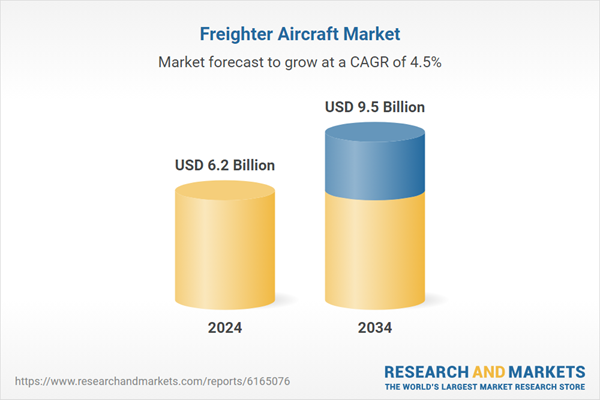The demand for cargo aircraft is shifting rapidly due to cost pressures, operational agility, and e-commerce requirements. Conversions of passenger aircraft into freighters are playing a vital role in meeting these evolving needs.
The passenger-to-freighter (P2F) conversion segment led the market in 2024 with a 56.6% share. This dominance is driven by cost-effective acquisition options, readily available retired passenger planes, and significantly reduced lead times. Airlines and lessors are increasingly opting for conversions to maximize the utility of existing assets while keeping pace with the rising cargo demand across regional and global routes. Expanding P2F capabilities and securing aging aircraft for timely modification will be crucial to address emerging growth markets and maintain competitiveness.
In 2024, the commercial category represented an 88.1% share. Industry leaders pointed out that increased trade volumes, growing digital commerce, and airline-led conversions are reinforcing the commercial segment’s dominance. Airlines are actively working to enhance operational efficiency using existing fleets and accelerating investment in dedicated cargo aircraft to keep up with surging demand. In response to rapid shifts in global supply chains, the commercial cargo sector is streamlining logistics to support high-speed, time-critical deliveries. Upgrading fleets and integrating intelligent cargo solutions is expected to be critical for optimizing freight movement.
U.S. Freighter Aircraft Market was valued at USD 2.24 billion in 2024. Driven by fast-growing e-commerce infrastructure, strong industrial output, and the need for streamlined logistics, the US continues to play a central role in global air cargo. The consistent rise in air freight demand supports inventory reduction, efficient manufacturing schedules, and rapid delivery expectations across the country. Companies are accelerating their investment in modern fuel-efficient aircraft while building strategic alliances with logistics and tech-forward commerce platforms to maintain market advantage and expand operational reach.
Key players shaping the Global Freighter Aircraft Market include Leonardo S.p.A., Israel Aerospace Industries, Boeing, Elbe Flugzeugwerke GmbH, Airbus, Lockheed Martin Corporation, Commercial Aircraft Corporation of China, HAECO Group, and ST Engineering. To secure their position in the competitive freighter aircraft market, leading companies are focusing on three strategic pillars. First, they are ramping up passenger-to-freighter (P2F) conversion programs to meet time-sensitive cargo demand efficiently and cost-effectively. Partnerships with OEMs and MRO providers are enabling faster turnaround times and ensuring reliable capacity expansion. Secondly, firms are investing in next-generation, fuel-efficient freighter aircraft to meet regulatory and environmental targets. Finally, strengthening ties with e-commerce and logistics companies helps to align aircraft development with evolving delivery needs.
Comprehensive Market Analysis and Forecast
- Industry trends, key growth drivers, challenges, future opportunities, and regulatory landscape
- Competitive landscape with Porter’s Five Forces and PESTEL analysis
- Market size, segmentation, and regional forecasts
- In-depth company profiles, business strategies, financial insights, and SWOT analysis
This product will be delivered within 2-4 business days.
Table of Contents
Companies Mentioned
The key companies profiled in this Freighter Aircraft market report include:- Airbus
- Boeing
- Lockheed Martin Corporation
- Embraer
- ATR Aircraft
- Aeronautical Engineers Inc.
- De Havilland Canada
- GE Capital Aviation Services
- Pemco
- Precision Aircraft Solutions
- Textron Aviation Inc.
- Elbe Flugzeugwerke GmbH
- Leonardo S.p.A.
- Commercial Aircraft Corporation of China
- HAECO Group
- Israel Aerospace Industries
- ST Engineering
- Ilyushin Aviation Complex
- Tupolev
Table Information
| Report Attribute | Details |
|---|---|
| No. of Pages | 160 |
| Published | August 2025 |
| Forecast Period | 2024 - 2034 |
| Estimated Market Value ( USD | $ 6.2 Billion |
| Forecasted Market Value ( USD | $ 9.5 Billion |
| Compound Annual Growth Rate | 4.5% |
| Regions Covered | Global |
| No. of Companies Mentioned | 20 |









